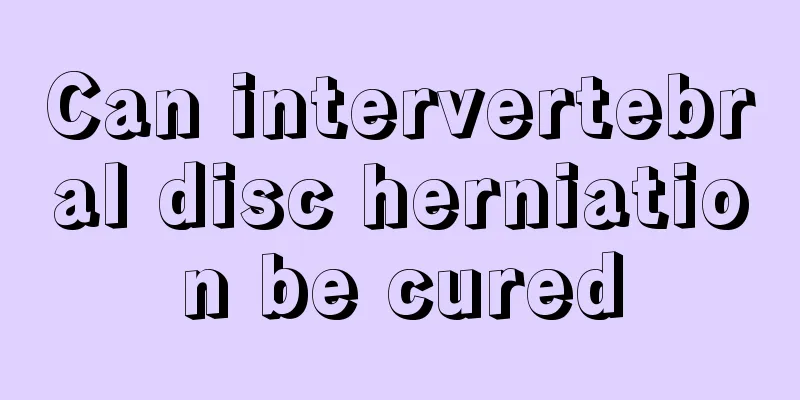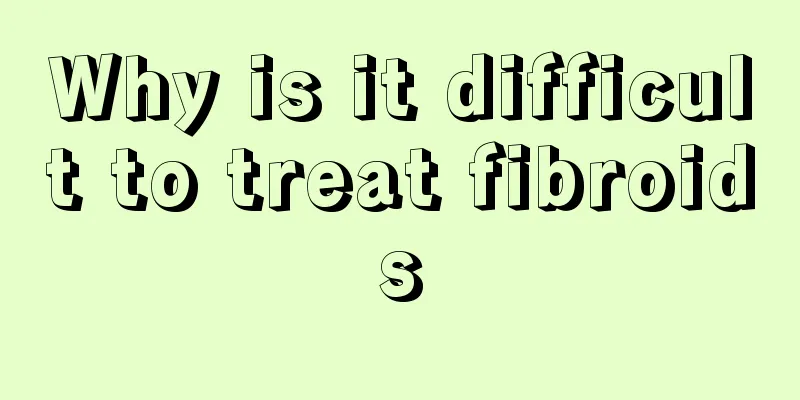Can intervertebral disc herniation be cured

|
Intervertebral disc herniation mainly refers to lumbar disc herniation, which is a degenerative change of the bones. Generally, the chance of suffering from this disease increases with age, and intervertebral disc herniation also shows occupational characteristics. People who sit in offices for long periods of time are the main group suffering from lumbar disc herniation. So, can patients with herniated disc be cured? Treatment of herniated disc: 1. Traction therapy Traction therapy for lumbar disc herniation is a method that uses the relationship between action force and reaction force in mechanics to achieve the treatment goal through a special traction device. 2. Physical therapy Shortwave and ultrashort wave therapy: In the early stages of the disease, in order to improve blood circulation in the affected area, eliminate possible inflammatory reactions such as exudation and edema, and relieve pain caused by compression or stimulation of the nerve roots, shortwave and ultrashort wave electrotherapy are generally used. During treatment, the two electrodes can be placed opposite each other in the lumbar sacral region or in parallel in the lumbar sacral region and the back of the affected leg. Warm temperature, once a day, 20-40 minutes each time. One course of treatment is 15-20 times. 3. Western manual therapy This manual therapy is a treatment method that uses the operator's hands to perform passive activities such as pushing, pulling, and rotating the patient's bones and joints. It takes the functional anatomy of bones and joints as the treatment basis, takes the biomechanical principles of bone and joint activities as the guidance, and adopts corresponding manipulation techniques to achieve the purpose of improving the patient's bone and joint function and alleviating clinical symptoms. For lumbar disc herniation, Western techniques use different auxiliary movements or passive physiological movements to perform pushing, vibration, rotation and traction of the lumbar spinous process or joint side. Several techniques can be used at the same time, and four levels of strength 1, 2, 3, and 4 can be applied according to the patient's condition. For patients in the acute stage of lumbar disc herniation, severe pain, and high irritability, light techniques can be used; for patients with chronic disease or those with impaired joint movement function, heavy techniques can be used. The duration is usually 45 seconds, 60 seconds or 0 seconds at a frequency of 1-2 times per second. The intensity and time can be selected as appropriate. Each course of treatment is 5-10 times, with a rest period of 10-20 days between 2 courses of treatment. IV. Drug Treatment Drug treatment for lumbar disc herniation is generally only used as an auxiliary treatment with the main purpose of relieving symptoms. 5. Local blockade therapy There are two types of local blockade therapy for lumbar disc herniation: acupoint blockade and local regional blockade. Commonly used closed acupoints include Sanjiaoshu, Shenshu, Dachangshu, Zhishi, Zusanli, Huantiao, Weizhong, Chengshan and other acupoints. Commonly used methods: 1. Add 4 ml of 2% leuprorelin hydrochloride injection to 1 ml of prednisolone acetate, mix well, and inject into 3-4 of the above-mentioned acupoints, and block once every 5-7 days. 3-5 times constitutes a course of treatment. 2. 1-3 ml of vitamin B12 injection should be injected into 3-4 of the above-mentioned acupoints. Closed once a day. One course of treatment is 10 times. 6. Alternative Therapies Alternative medicine refers to therapies that are outside of traditional Western medicine and whose effectiveness can replace or supplement the effects of Western medicine. Compared with traditional treatments, which have high surgical risks and are often difficult to cure, alternative therapies are more fundamental and safer. Among them, the most eye-catching is the new attempt that began in the 1980s to use pure natural sawtooth shark cartilage powder to treat lumbar disc herniation and restore the degenerated annulus fibrosus cartilage of the human body. 7. SDS Non-Surgical Spinal Decompression System SDS non-surgical spinal decompression system: It is the crystallization of the highest European and American technology introduced through long-term cooperation with the United States. Many clinical studies around the world have fully confirmed the exact efficacy of SDS technology. It can shrink the intervertebral disc that causes discogenic pain. In addition to treating the intervertebral disc pain, it allows water and nutrients to penetrate into the intervertebral disc, thereby nourishing the intervertebral disc and repairing the intervertebral disc and surrounding tissues. Compared with other treatments, SDS has the advantages of no surgery, no pain, safety, speed, accuracy and intelligence. |
<<: How should patients with cervical spondylosis choose pillows when sleeping?
>>: What are the treatment methods for dark complexion caused by kidney deficiency?
Recommend
What are the side effects of bee pollen?
Many people have used bee pollen. Usually, everyo...
Can softening water shrink pores?
The pH value of toner is generally close to seven...
What are the nursing measures after the spread of gallbladder cancer?
Gallbladder cancer is a disease that troubles man...
What are the effective preventions for teratoma
Most ovarian teratomas occur in women of childbea...
What are the most effective exercises to reduce back fat
For female friends, if there is too much fat on t...
When is the best time to remove moles? Avoid summer
Moles in many places on our faces have bad meanin...
Can I still eat flour if it clumps?
We all know that the food we eat has a shelf life...
Which dried fruits can't pregnant women eat
There are many types of dried fruits, and people ...
What causes pain in the spine when bending over?
Low back pain is caused by the gradual accumulati...
How to remove the black marks on a burnt casserole
There are some tiny pores in the casserole, so it...
What is the difference between red and white guava?
Guava is a delicious fruit. It tastes sour and sw...
What is the reason for back heaviness and pain
In life, many people suffer from back pain. There...
How is chest circumference calculated
Every woman has a different bust size. When buyin...
Protein interaction methods
Protein is an extremely important substance. It i...
Why does the middle finger of my left hand feel numb?
Friends who have numbness in their left fingers s...









